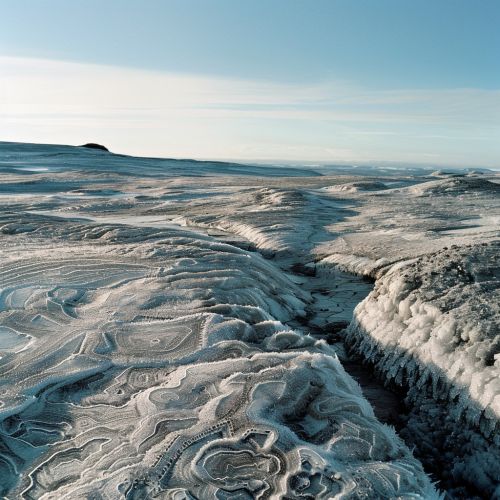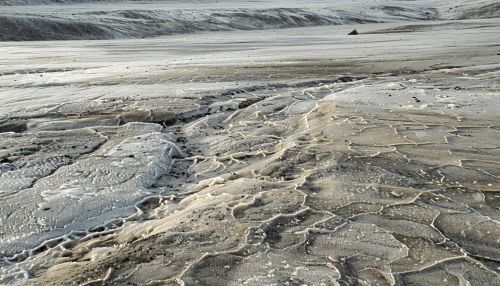Periglacial processes
Introduction
Periglacial processes are the physical and chemical weathering processes that occur in environments subjected to intense freeze-thaw cycles, typically found in regions at the edge of glaciers glacial environments. These processes are responsible for the unique geomorphological features found in these regions, such as patterned ground, frost heaves, and ice wedges.
Periglacial Environment
A periglacial environment refers to the area around the edge of a glacier. This term is derived from the Greek word 'peri', meaning around or surrounding, and 'glacial', referring to the presence of ice. These environments are characterized by cold climates where the ground is subjected to freezing and thawing cycles. Periglacial environments can be found in high latitude regions, such as the Arctic and Antarctic, as well as high altitude areas like the Himalayas Himalayan mountain range.


Periglacial Processes
Periglacial processes are primarily driven by the freezing and thawing of water in the ground. These processes can be divided into two main categories: physical and chemical weathering processes.
Physical Weathering
Physical weathering in periglacial environments is primarily caused by frost action. This process involves the freezing and expansion of water in the ground, which can exert significant pressure and cause the ground to crack and break apart. There are several types of frost action, including frost heaving, frost shattering, and frost sorting.
Frost Heaving
Frost heaving occurs when the freezing of water in the ground causes the soil and rocks to be pushed upwards. This can result in the formation of unique landforms such as pingos pingo landforms, which are dome-shaped mounds of earth-covered ice.
Frost Shattering
Frost shattering, also known as freeze-thaw weathering, occurs when water seeps into the cracks of rocks and freezes. The expansion of the water as it freezes can cause the rock to crack and break apart.
Frost Sorting
Frost sorting is the process by which the freeze-thaw cycles cause the movement and sorting of soil particles. This can result in the formation of patterned ground, which is a common feature in periglacial environments.
Chemical Weathering
Chemical weathering in periglacial environments is less common than physical weathering, but it can still play a significant role. This process involves the alteration of the chemical composition of rocks and soil due to the action of water, air, and biological activity. In periglacial environments, this can result in the formation of permafrost permafrost layers, which is a layer of soil or rock that remains frozen for more than two consecutive years.
Impact of Periglacial Processes
Periglacial processes have a significant impact on the landscape and ecosystems of periglacial environments. They influence the formation of unique landforms, the distribution of plant and animal species, and the availability of resources. Additionally, these processes can have significant implications for human activities, such as construction and transportation, due to the instability of the ground in these regions.
Conclusion
Periglacial processes play a crucial role in shaping the physical landscape of cold environments. Understanding these processes and their impacts is essential for managing and preserving these unique and fragile ecosystems.
